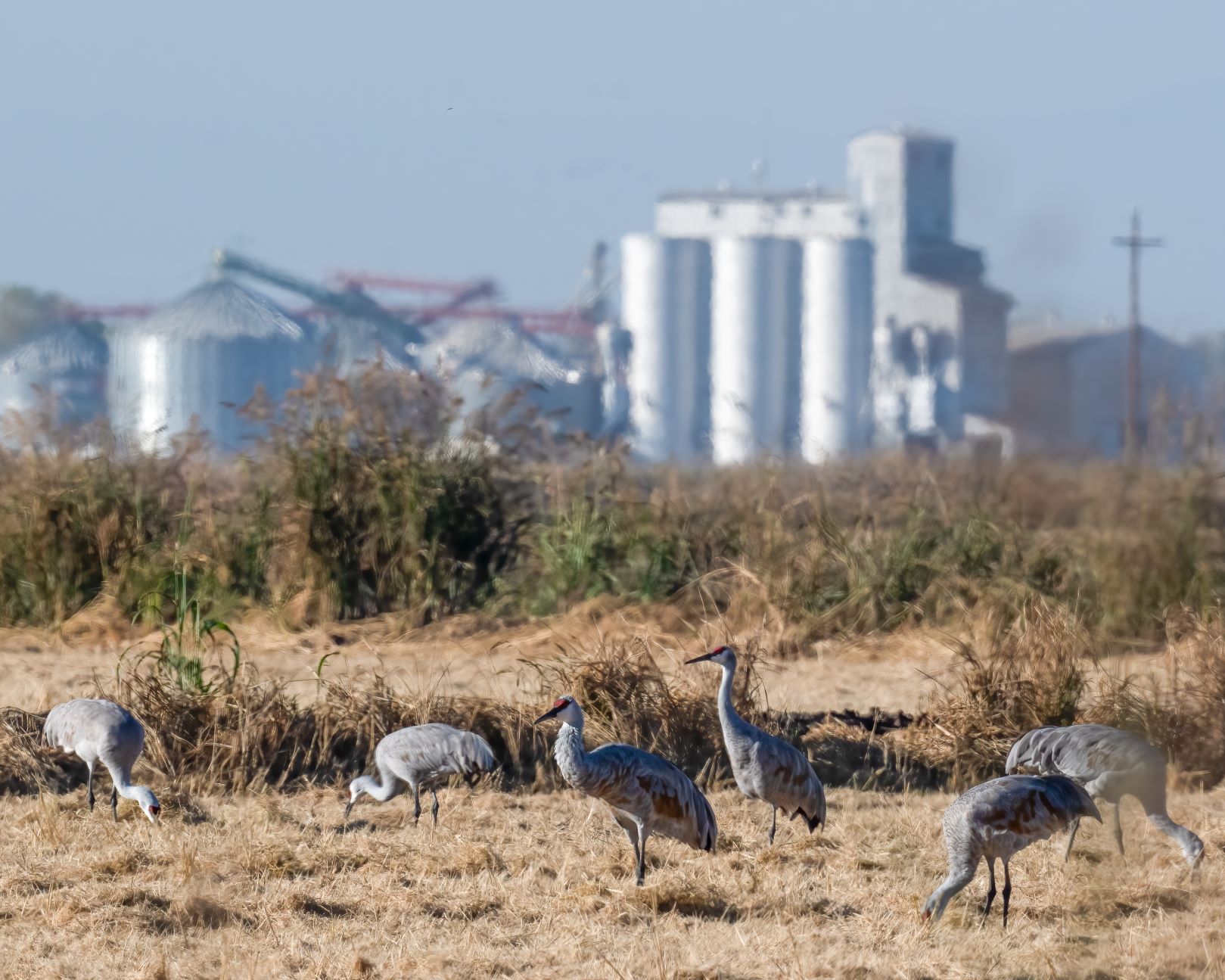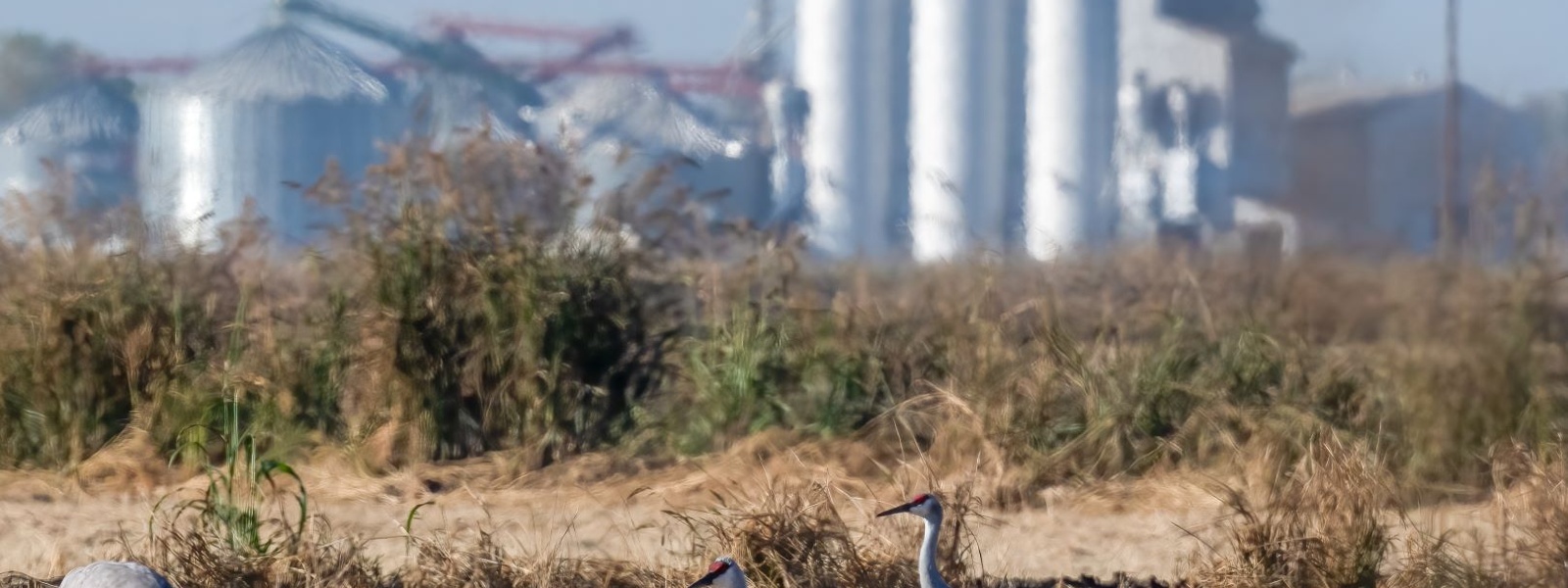Commentary: Drought impacts an entire agricultural ecosystem


Sandhill cranes graze on Sacramento Valley rice fields, which provide food and habitat for wintering waterfowl and other wildlife. Rice farming also supports an array of regional businesses, all of which are affected by drought.

By Tim Johnson
This third year of extreme drought is taking a devastating toll on agriculture in California. We see pictures of orchards being removed, dry canals and fields that should be a verdant green now a sunburned brown.
The impacts on the farm are easy to see. The effects on our communities and on the wildlife that depend on agricultural lands in production are no less real, even if they are harder to observe.
The University of California, Davis, estimates that 530,000 acres went unplanted in the state this year. Cotton, tomatoes, forage crops, sunflowers, seed crops and rice are all affected. In the Sacramento Valley, the loss of 14,300 jobs and $1.3 billion in economic value added can be attributed to the dry fields. This is in addition to the $950 million lost in crop production.
But the impact goes far beyond the family farm.
Communities in the Sacramento Valley are quiet. Not only are the tractors idle but so are the crop dusters that plant the fields, apply nutrients and control pests. There is an unsettling lack of trucks on the road hauling rice to the dryers and fewer tomato trucks delivering to the canneries.
Stop by the local corner market to grab a soda and bag of chips and you will find fewer people doing the same. Many have left the region to find work where crops were planted or for other jobs outside of agriculture.
Rural California makes food for so many, and we do it exceptionally well. Recently, the Purdue “All-American” Marching Band took to the field during halftime to spell ‘FARMERS’ then ‘<1% FEEDS 100%’. Often people think of the places outside our cities as vacant, open space where old barns dot the landscape and the pace of life is slower. In reality, there is a hive of activity year-round to grow, process and ship the products we make—food—across the state and even around the world.
But it takes more than farmers. It takes an entire ecosystem of businesses to produce and provide food every year. Everyone including the parts suppliers, fertilizer dealers, pest control advisors, irrigation districts, on–call mechanics, dryers and mills all play a critical part.
With fewer acres planted and harvested, the businesses and services farms rely on wither as well. Farmers are very concerned about our suppliers. Crop insurance covers many of the losses on the farm when times get tough, but our support businesses do not have this tool. The simple truth is that if our support infrastructure fails, we will not be able to return to full production when it rains again.
Rice is a great example of a crop that provides wildlife habitat while also producing food. Years ago, when we stopped burning rice straw and flooded our fields in the winter instead, we realized just how important winter-flooded rice was to the ducks and geese of the Pacific Flyway. More than 50% of the food they eat when wintering in California comes from rice fields. A few years later, our fields were designated as shorebird habitat of international significance—a vital stopping place for birds that migrate across entire continents.
Rice is not the only example of working farms providing valuable wildlife habitat. Hundreds more species can be found in fields across the state.
The severity of this drought will teach us many lessons. Many are obvious: We are at the point where we can’t conserve our way out of drought, and we need to find new ways to capture the rain when it does fall. Other impacts on our communities, support businesses and wildlife are just starting to come into focus.
The question is: What will we do? Props are owed to the state of California for establishing the Small Agricultural Business Drought Relief Grant Program and to the U.S. Department of Agriculture for exploring a similar program for larger agricultural businesses. The California Department of Water Resources should also be commended for funding the second year of a program to strategically pump groundwater, without impacting aquifers, to flood ricelands this winter for waterfowl.
These stop-gap measures are important and greatly appreciated, and we hope they are just a start to recognizing the many layered effects of drought. We must have a system for safeguarding all components of the agricultural ecosystem—from the farm to the suppliers to the wildlife—that rely so heavily on agricultural lands in production.
(Tim Johnson is president and CEO of the California Rice Commission and may be reached at tjohnson@calrice.org.)




